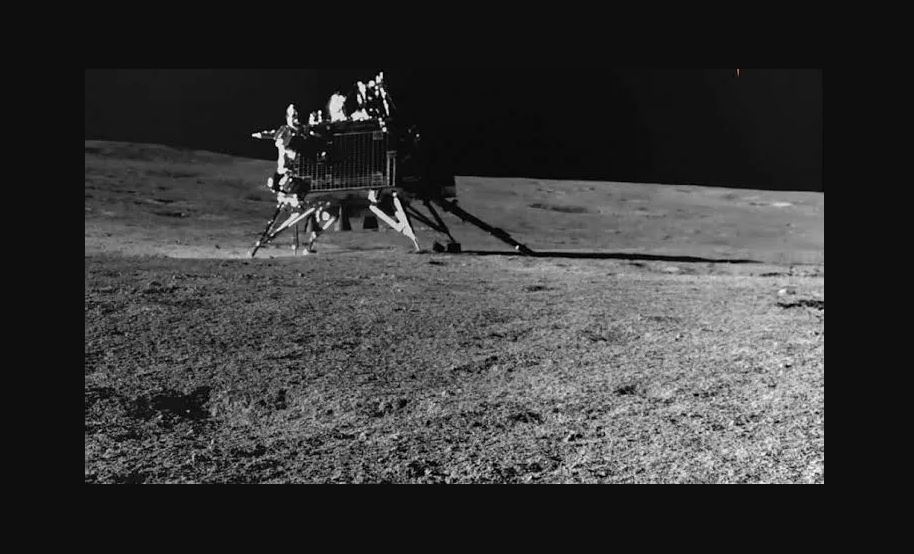India's Lunar Rover Concludes Mission And Is Put To Sleep
India's lunar rover concludes mission and is put to sleep according to India's space agency. The Indian Space Research Organisation (ISRO) reported that it deactivated its moon rover, which became the first craft to reach the lunar south pole, after the rover successfully completed its two-week mission, during which it conducted various experiments.
Author:Karan EmeryReviewer:Daniel JamesSep 05, 202379K Shares1.4M Views

India's lunar rover concludes mission and is put to sleepaccording to India's space agency. The Indian Space Research Organisation (ISRO) reported that it deactivated its moon rover, which became the first craft to reach the lunar south pole, after the rover successfully completed its two-week mission, during which it conducted various experiments.
According to ISRO's statement posted on X(formerly Twitter) late on Saturday, the Pragyan rover from the Chandrayaan-3 spacecraft was placed in Sleep mode while keeping its batteries charged and receiver active.
"The Rover completed its assignments. Is now safely parked and set into sleep mode," the statement said.
"Hoping for a successful awakening for another set of assignments!" ISRO said. "Else, it will forever stay there as India's lunar ambassador."
The rover's scientific instruments were powered down, and the data it gathered was transmitted back to Earth through the lander. The Chandrayaan-3 lander and rover had a planned operational duration of just one lunar day, equivalent to 14 Earth days.
India's space agency, ISRO, has confirmed that the rover's battery is fully charged, and its solar panel is poised to harness sunlight during the next lunar sunrise, anticipated on September 22. ISRO expressed optimism for a successful reactivation to continue its scientific objectives.
The primary mission of the rover was to search for indications of frozen water on the lunar surface, a potential resource for future astronaut missions, either as a source of drinking water or for manufacturing rocket fuel. However, ISRO did not provide specifics regarding whether the rover uncovered frozen water.
Earlier in the week, the space agency disclosed that the rover's findings confirmed the presence of various elements on the lunar surface, including sulfur, aluminum, iron, calcium, chromium, titanium, manganese, oxygen, and silicon.
India achieved a significant milestone with the successful landing of the rover on the moon last week, becoming the fourth nation, following the United States, the Soviet Union, and China, to attain this remarkable feat.
India's lunar landing marked a significant achievement, placing it in the company of the United States, China, and the former Soviet Union. What set India apart was its successful touchdown in the challenging lunar south pole region, a milestone reached shortly after Russia's Luna-25 had experienced a crash during a similar endeavor.
The soft and precise landing of Chandrayaan-3, following a previous unsuccessful attempt in 2019, triggered widespread celebration in the world's most populous nation. The media widely lauded this achievement as India's most remarkable scientific accomplishment to date.
India is eagerly anticipating the success of a probe launched on Saturday, aimed at studying the sun and monitoring solar winds, which are known to create disturbances on Earth often visible as auroras.
Conclusion
ISRO reported on Sunday that the satellite is currently in good health and positioned in Earth's orbit as it readies itself for its extensive 1.5 million-kilometer (930,000-mile) journey.
Jump to

Karan Emery
Author
Karan Emery, an accomplished researcher and leader in health sciences, biotechnology, and pharmaceuticals, brings over two decades of experience to the table. Holding a Ph.D. in Pharmaceutical Sciences from Stanford University, Karan's credentials underscore her authority in the field.
With a track record of groundbreaking research and numerous peer-reviewed publications in prestigious journals, Karan's expertise is widely recognized in the scientific community.
Her writing style is characterized by its clarity and meticulous attention to detail, making complex scientific concepts accessible to a broad audience. Apart from her professional endeavors, Karan enjoys cooking, learning about different cultures and languages, watching documentaries, and visiting historical landmarks.
Committed to advancing knowledge and improving health outcomes, Karan Emery continues to make significant contributions to the fields of health, biotechnology, and pharmaceuticals.

Daniel James
Reviewer
Daniel James is a distinguished gerontologist, author, and professional coach known for his expertise in health and aging.
With degrees from Georgia Tech and UCLA, including a diploma in gerontology from the University of Boston, Daniel brings over 15 years of experience to his work.
His credentials also include a Professional Coaching Certification, enhancing his credibility in personal development and well-being.
In his free time, Daniel is an avid runner and tennis player, passionate about fitness, wellness, and staying active.
His commitment to improving lives through health education and coaching reflects his passion and dedication in both professional and personal endeavors.
Latest Articles
Popular Articles